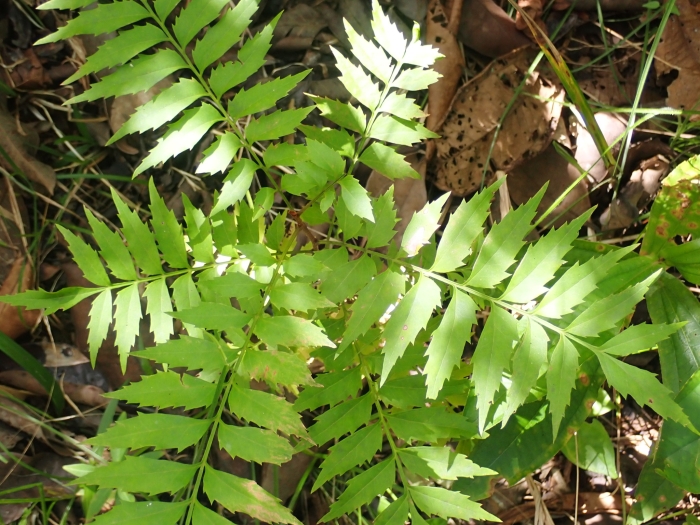Leopardwood
(Roupala montana)
Leopardwood (Roupala montana)
/
/

keesgroenendijk
CC BY 4.0
Image By:
keesgroenendijk
Recorded By:
Copyright:
CC BY 4.0
Copyright Notice:
Photo by: keesgroenendijk | License Type: CC BY 4.0 | License URL: http://creativecommons.org/licenses/by/4.0/ | Rights Holder: keesgroenendijk | Publisher: iNaturalist | Date Created: 2021-11-28T12:50:06-08:00 |

























Estimated Native Range
Summary
Roupala montana, commonly known as Leopardwood, is a versatile plant ranging from a shrub to a tree and is part of the Proteaceae family. It is native to a variety of habitats including tropical and subtropical forests, savannas, and scrublands across the Neotropics, from Mexico to Argentina. This species exhibits significant morphological variability, typically standing 3-26 feet tall in shrub form, but it can grow into a tree reaching heights of up to 82 feet. Adult plants usually have simple leaves, though they can be compound in some individuals. The bark is often attractively patterned, resembling the spots of a leopard, which is how it earned its common name.
Leopardwood is valued for its hard, dense wood that is used for high-quality woodworking and construction, as well as for fuel and producing excellent charcoal. It is also recognized for its medicinal uses in traditional practices. In cultivation, Roupala montana is appreciated for its adaptability and the ornamental quality of its wood. It can be used in reforestation projects and as an ornamental tree in large gardens or parks. This species prefers full sun to partial shade and thrives in well-drained soils. While it is not known for being particularly water-demanding, it does benefit from regular moisture, especially in drier climates.CC BY-SA 4.0
Leopardwood is valued for its hard, dense wood that is used for high-quality woodworking and construction, as well as for fuel and producing excellent charcoal. It is also recognized for its medicinal uses in traditional practices. In cultivation, Roupala montana is appreciated for its adaptability and the ornamental quality of its wood. It can be used in reforestation projects and as an ornamental tree in large gardens or parks. This species prefers full sun to partial shade and thrives in well-drained soils. While it is not known for being particularly water-demanding, it does benefit from regular moisture, especially in drier climates.CC BY-SA 4.0
Plant Description
- Plant Type: Shrub, Tree
- Height: 20-30 feet
- Width: 10-15 feet
- Growth Rate: Moderate
- Flower Color: White
- Flowering Season: Fall, Winter
- Leaf Retention: Evergreen
Growth Requirements
- Sun: Full Sun, Part Shade
- Water: Medium
- Drainage: Medium
Common Uses
Bee Garden, Border Plant, Low Maintenance
Natural Habitat
Native to tropical and subtropical forests, savannas, and scrublands across the Neotropics
Other Names
Common Names: Roupala
Scientific Names: , Roupala montana, Embothrium chaparro, Embothrium chaparro, Embothrium curvatum, Embothrium curvatum, Rhopala montana, Rhopala nervosa, Roupala adiantifolia, Roupala adiantifolia var. grandidentata
GBIF Accepted Name: